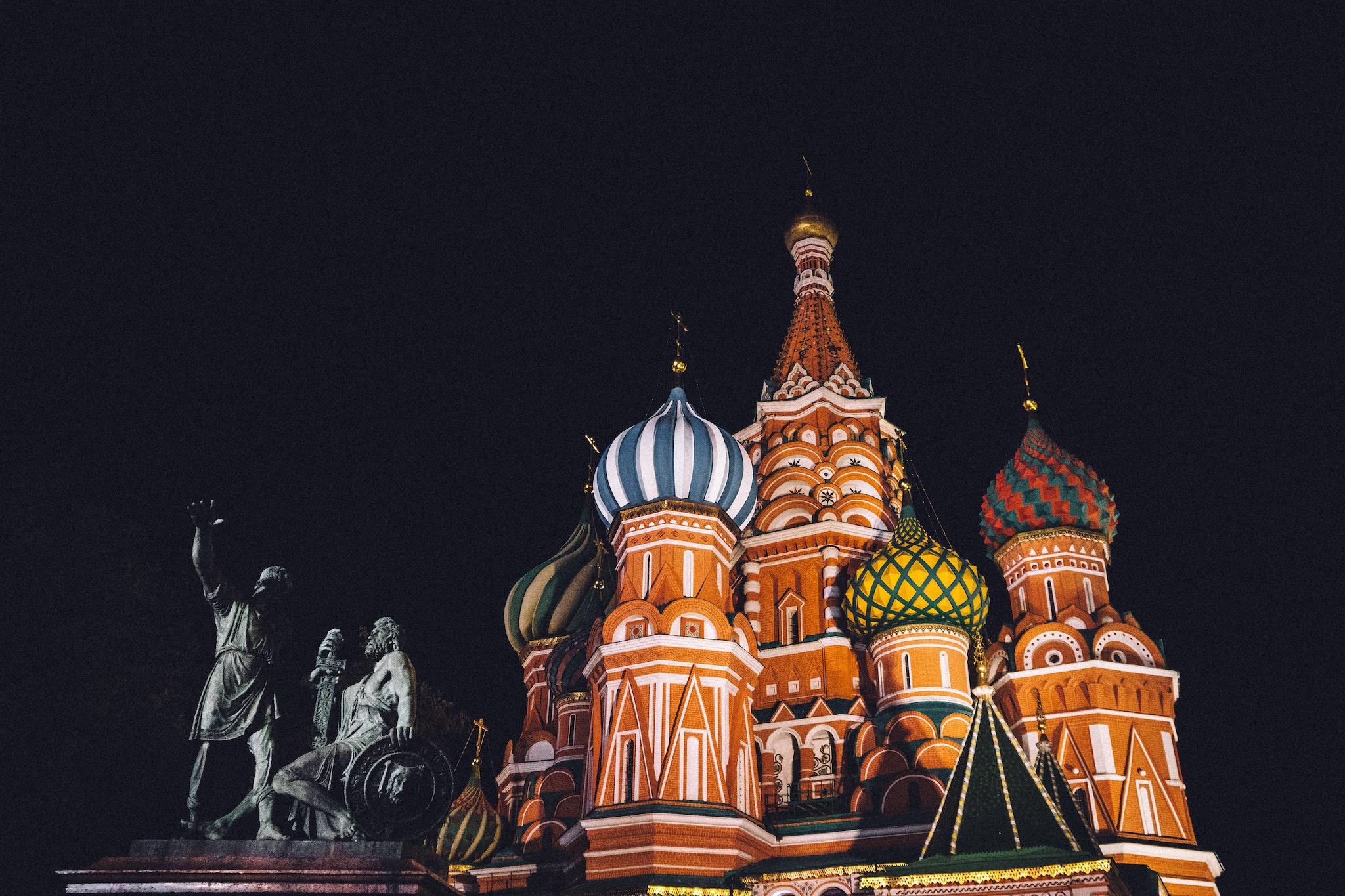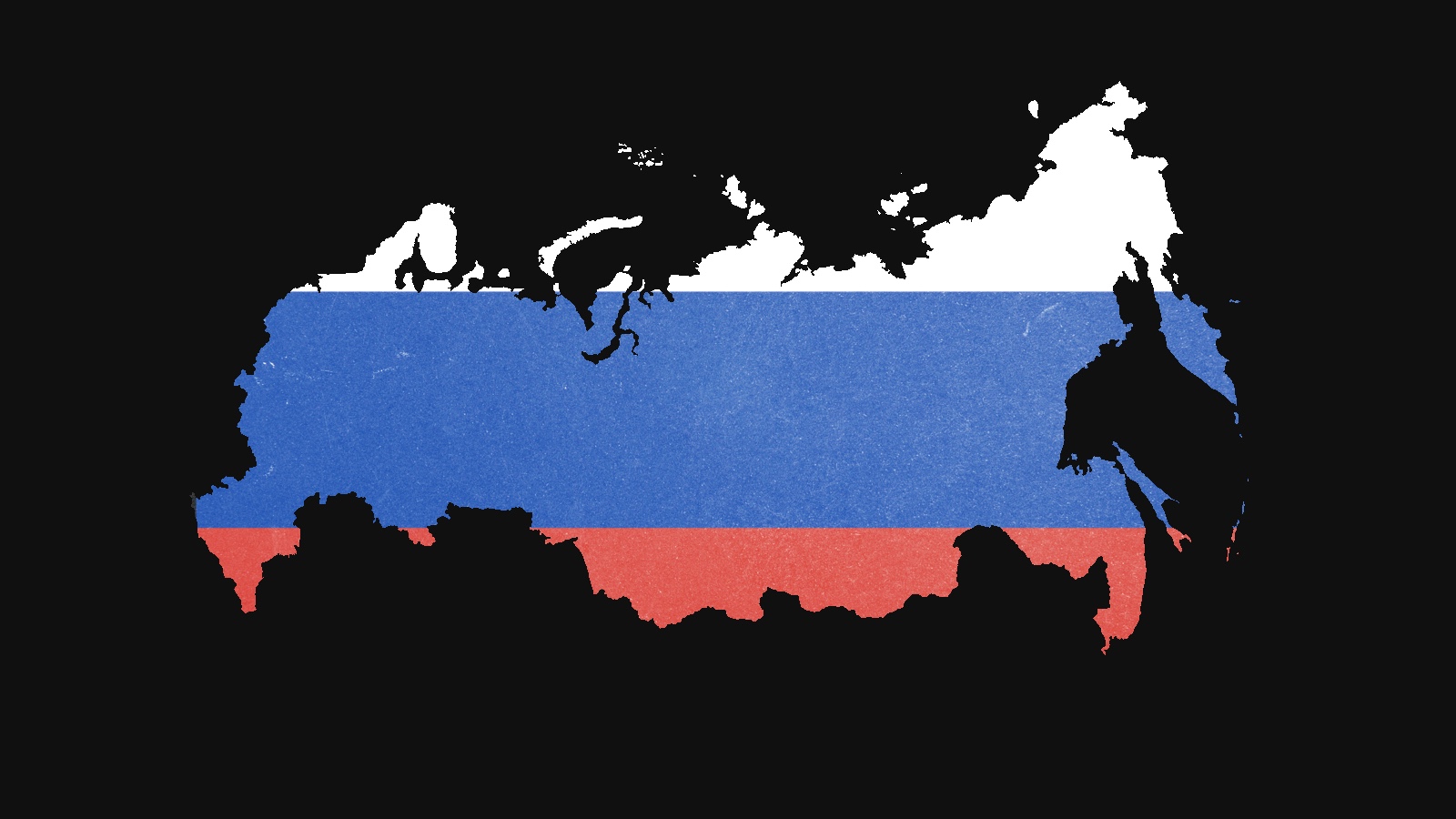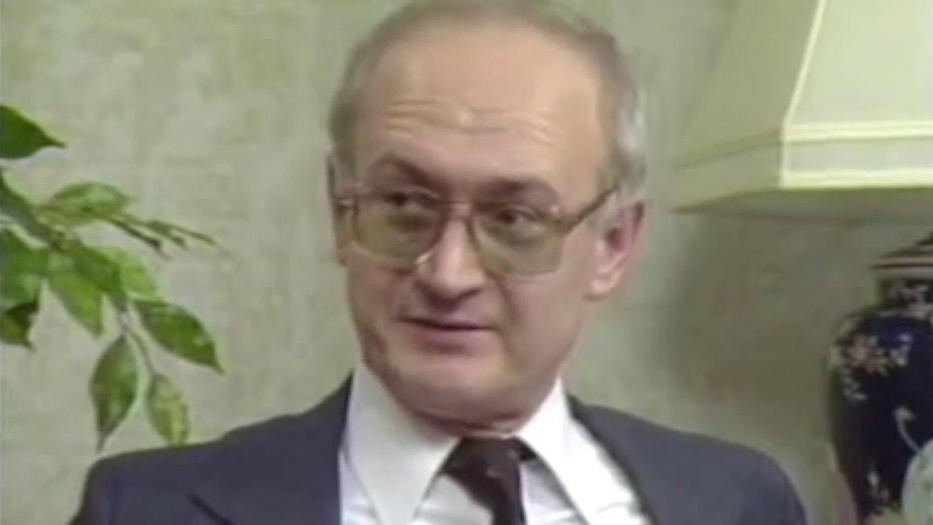The most controversial painting in Russian history
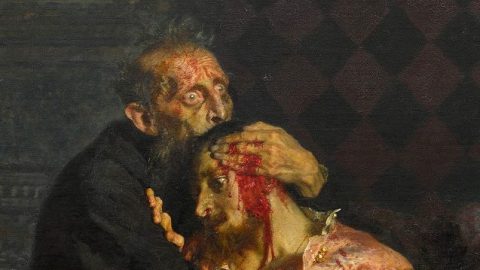
- In 19th century Russia, painters were not recognized as part of the intelligentsia.
- Consequently, their work had to be formally interpreted by critics, leading to ambiguity and controversy.
- A painting from the 1880s by Ilya Repin, Ivan the Terrible and His Son Ivan, divides Russians to this day.
In 19th century Russia, writers spoke loud and clear. Instead of hiding their personal beliefs behind dense layers of symbolism, they wrote unambiguously about the social, political, and economic problems of their time.
This made them somewhat unique in the literary world. Indeed, where the true meaning of books like Joseph Conrad’s Heart of Darkness continues to be debated to this day, there has never been any doubt that Nikolay Chernyshevsky’s What is to be Done? is, at its core, an answer to the question of what is to be done about the socialist revolution heralded by Karl Marx. Likewise, nobody can argue that, to Fyodor Dostoevsky, The Brothers Karamazov was about anything other than Christian values, specifically about the search for a benevolent God in a seemingly godless world.
Like writers, Russian painters from this period were more concerned with subject matter than they were with style. However, while writers were able to communicate directly with their audience, painters had to rely on mediators. This was not only because their images had to be translated into words, but also — as Elizabeth Kridl Valkenier explains in her article “Politics in Russian Art” — because painters “had not yet been accepted as part of the intelligentsia.” Thus, whenever a new painting was unveiled, critics took it upon themselves to identify its underlying message, sparking endless discussion.
Such was the case with Barge Haulers on the Volga, an 1873 painting by the Russian artist Ilya Repin, which — true to its name — depicts a group of workers hauling a barge across the banks of Russia’s most iconic river.
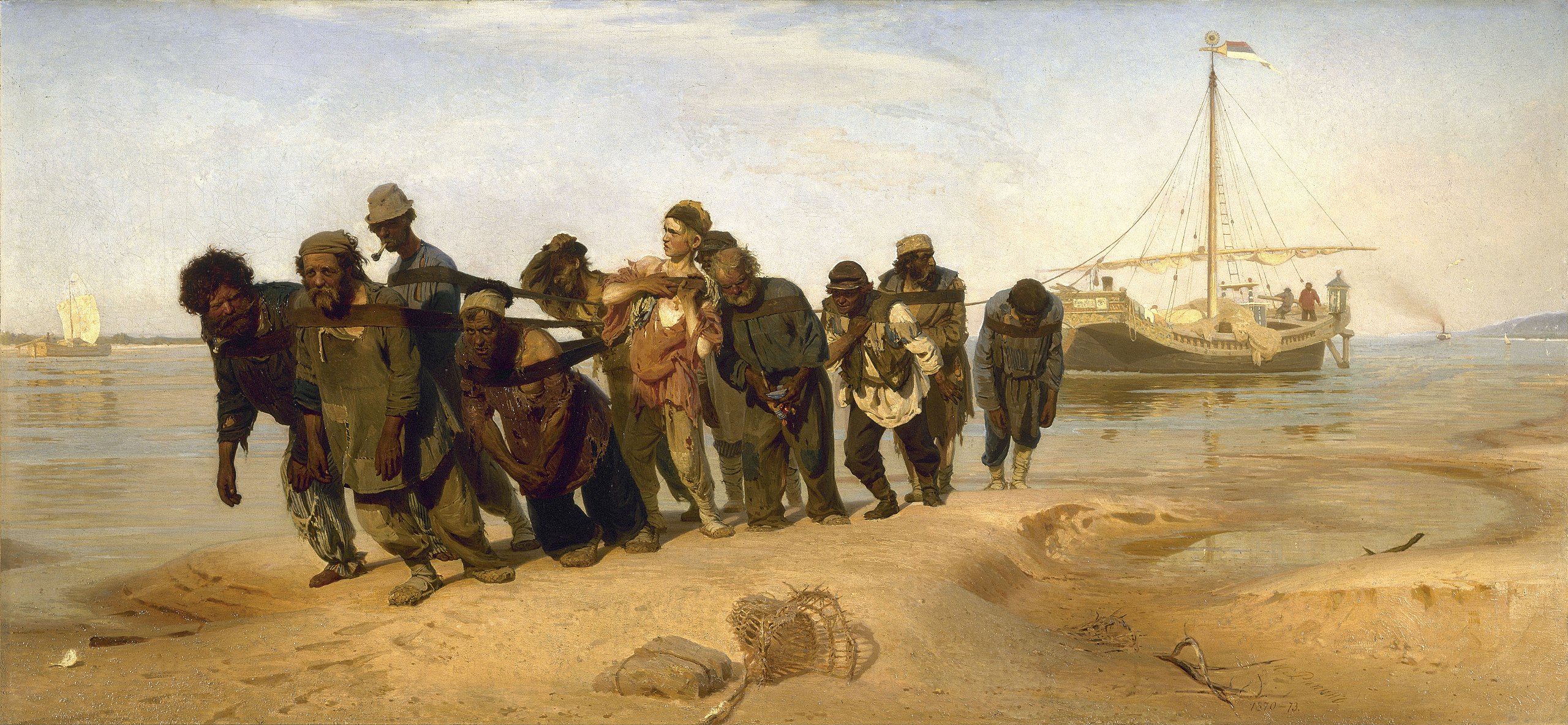
Instead of commenting on color or composition, critics wrote about the extent to which they felt the painting betrayed its creator’s stance on Russian politics. First up was Vladimir Stasov, an influential art critic who had taken Repin under his wing when he first came to St. Petersburg. According to Stasov, a socialist, the impoverished appearance of the men in “Barge Haulers” served as a reminder of the exploitation of the Russian masses at the hands of their capitalist overlords. He also believed that one of these men — a youth standing tall, lit by the sun — had been included in the painting as a symbol of the determination of young revolutionaries, ready to change a reality that their elders had long ago decided to accept.
Dostoevsky, who had a great passion for art, drew an entirely different conclusion from Repin’s image. Writing in his diary, he remarked that its subjects didn’t look dejected at all. On the contrary, they looked content. A religious conservative, Dostoevsky thought of Russia’s workers and peasants as simple-minded, good-hearted folk who, following the example set by Christ, accepted their lot in life without complaint and would never engage willingly in armed uprising — qualities that, to him, Repin seemed to have captured with his brushwork.
Ivan the Terrible and his son
Discussions about Barge Haulers of the Volga are nothing compared to the controversy that surrounded another more famous painting by Ilya Repin, Ivan the Terrible and His Son Ivan on 16 November 1581. Created between 1883 and 1885, this painting depicts Russia’s first and founding czar moments after murdering his own son.
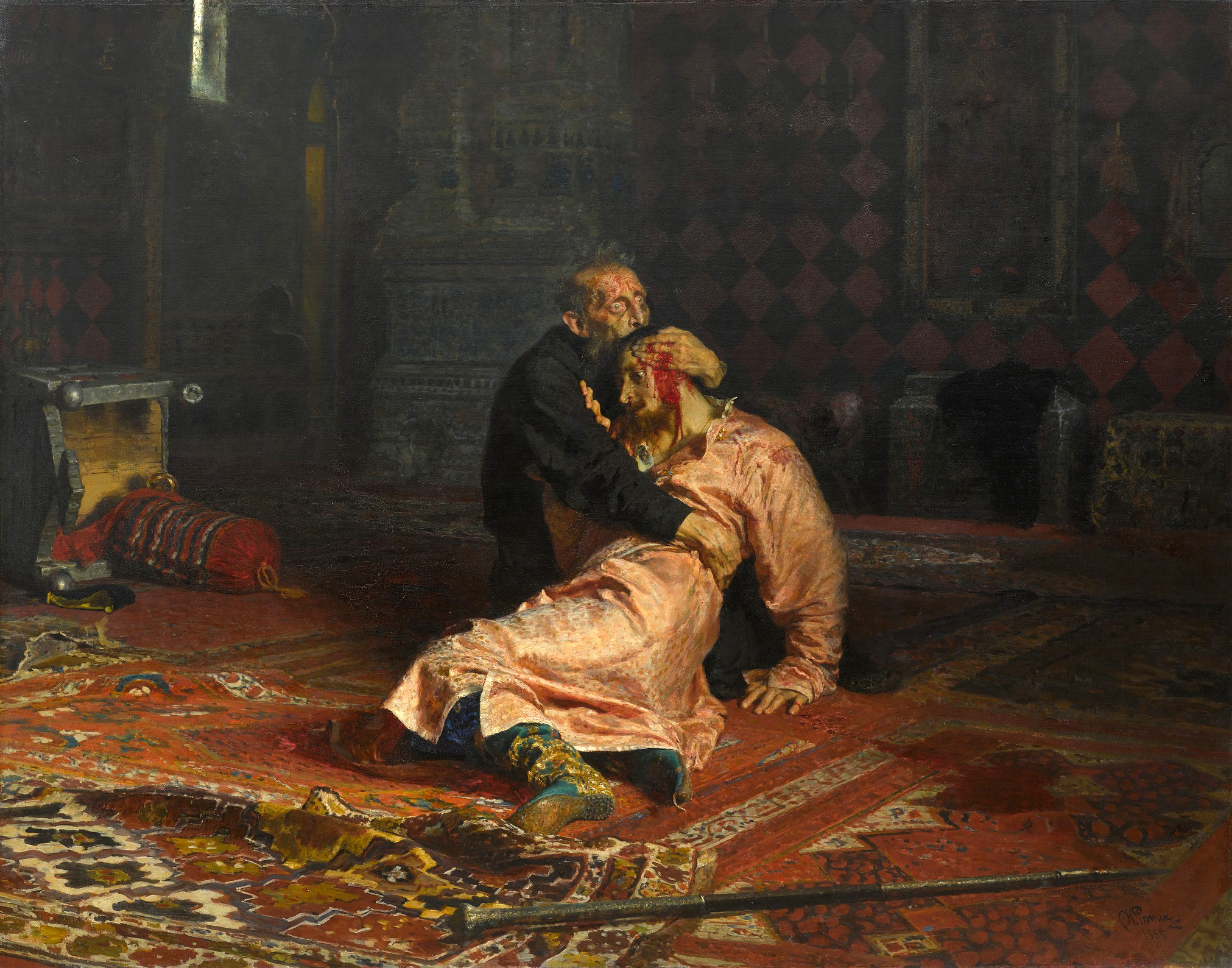
Throughout the years, Ivan the Terrible and His Son has not only been the subject of criticism but also iconoclasm. In 1913, the painting was slashed by a mentally ill iconographer. Though the culprit’s motivations were unclear, Repin himself blamed the attack on the growing influence of modern art movements such as Suprematism, whose followers, he felt, “had no respect for old art.” Driven into a corner, modernist painters responded by organizing lectures in which they questioned whether Repin’s artwork — being “old”— held any artistic or intellectual merit.
The painting was attacked yet again in 2018, this time by a man with a metal pole. In a video released by Russia’s interior ministry, the unnamed culprit says he became “overwhelmed by something” after drinking vodka inside the museum cafeteria. But there is more to this incident than drunk and disorderly conduct. According to The Guardian, some Russian media outlets said the culprit attacked the painting because he, like many other Russian nationalists, believed that Repin’s depiction of Ivan the Terrible — specifically him murdering his son — was inaccurate and part of an age-old smear campaign to present the czar as more bloodthirsty than he really was.
While there is no shortage of evidence to suggest that Ivan was indeed an exceptionally bloodthirsty ruler, it is true that historical sources offer conflicting accounts of how his son and heir actually died. A statesman named Ivan Timofeev, who lived and worked under the czar, wrote in his diary that the cesarevich was beaten to death by his father after attempting to prevent the latter from “committing an ugly act.” Jacques Margeret, a French mercenary captain serving in Russia and a contemporary of Timofeev, said that this was just a rumor and that, in reality, the cesarevich passed away while he was on a pilgrimage, possibly from illness.
It has been argued that Repin, one of the most employable painters in the Russian Empire and a nationalist himself, never intended to make a statement on the legacy of Ivan the Terrible, but that he used this well-known yet disputable aspect of the czar’s life as a metaphor for the senseless political violence that swept the country at the time of the painting’s creation, including the assassination of Czar Alexander II and the brutal executions of his assassins, which Repin attended and found disturbing. To this end, the focus of Ivan the Terrible and His Son is not on the murder itself, but on its aftermath: on the czar’s eyes, bulging with shame and regret at the realization of what he has done, as well as on the cesarevich, whose tender embrace of his murderer shows that he is capable of forgiving the unforgivable.
At the same time, it should be noted that Ilya Repin was the first artist to turn this well-known yet arguable aspect of the czar’s life into a painting. By giving the event a date — November 16, 1581 — Repin seems to regard this altercation not as a rumor, but as an event that really took place and which happened to have some major ramifications for the development of the empire. By robbing himself of a capable heir, Ivan the Terrible would have been personally responsible for ushering in a succession crisis that culminated in the Time of Troubles.
Repin’s own czar, Alexander III — whose political and familial lineage can be traced back to Ivan — was understandably not a fan of the painting. Its owner, a businessman and art collector named Pavel Tretyakov, was ordered not to exhibit it in his galleries.
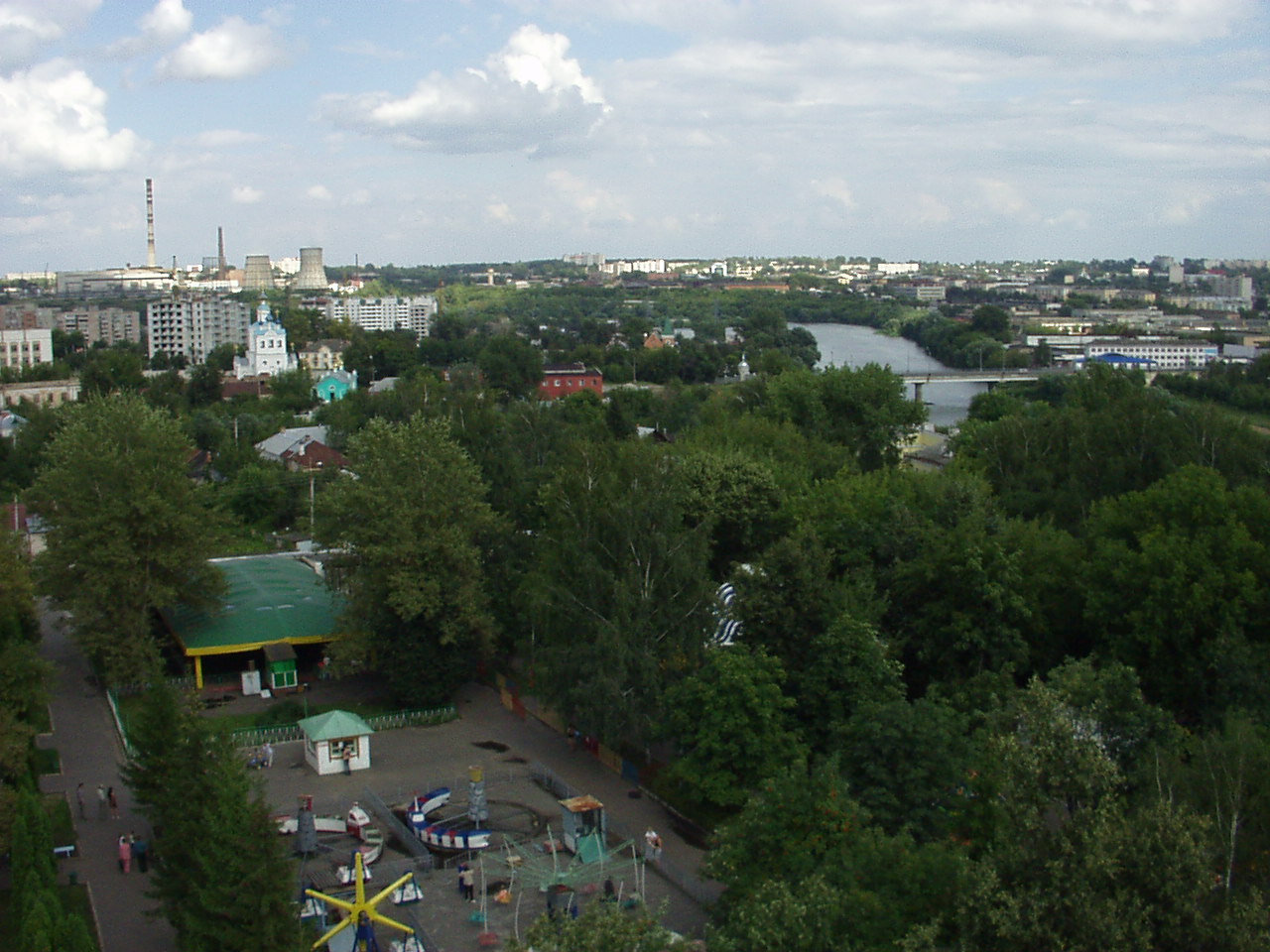
Today’s equally unfavorable attitude toward Ivan the Terrible and His Son reflects the ideological course charted by the Kremlin. While the painting is being attacked by iconoclasts, allies of President Vladimir Putin are erecting monuments to the man who laid the foundations for the Russian Empire. “We have a great, powerful president who has forced the world to respect and defer to Russia like Ivan the Terrible did in his time,” Vadim Potomsky, governor of Oryol, declared at a ceremony celebrating the completion of the country’s first official statue of the czar. His enthusiasm was shared by many citizens attending the event, while protesters were threatened.
Talking to Coda Story, Fyodor Krasheninnikov, a political analyst from Yekaterinburg, said the monument in Oryol is not necessarily a monument to Ivan himself, but to “great power and to a made-up concept of Russia” — a concept which Putin used to justify his invasion of Ukraine, and which Ilya Repin may or may not have deliberately called into question with his Ivan the Terrible and His Son.
